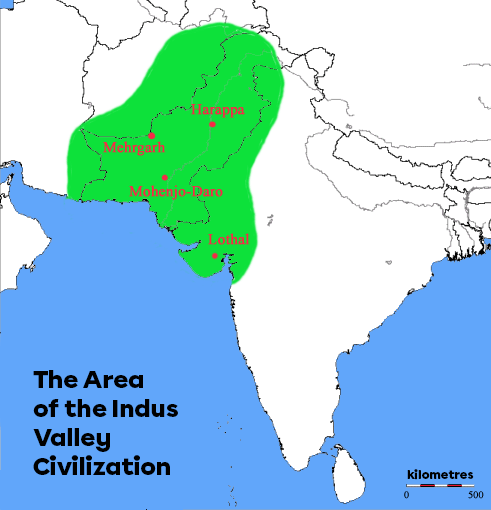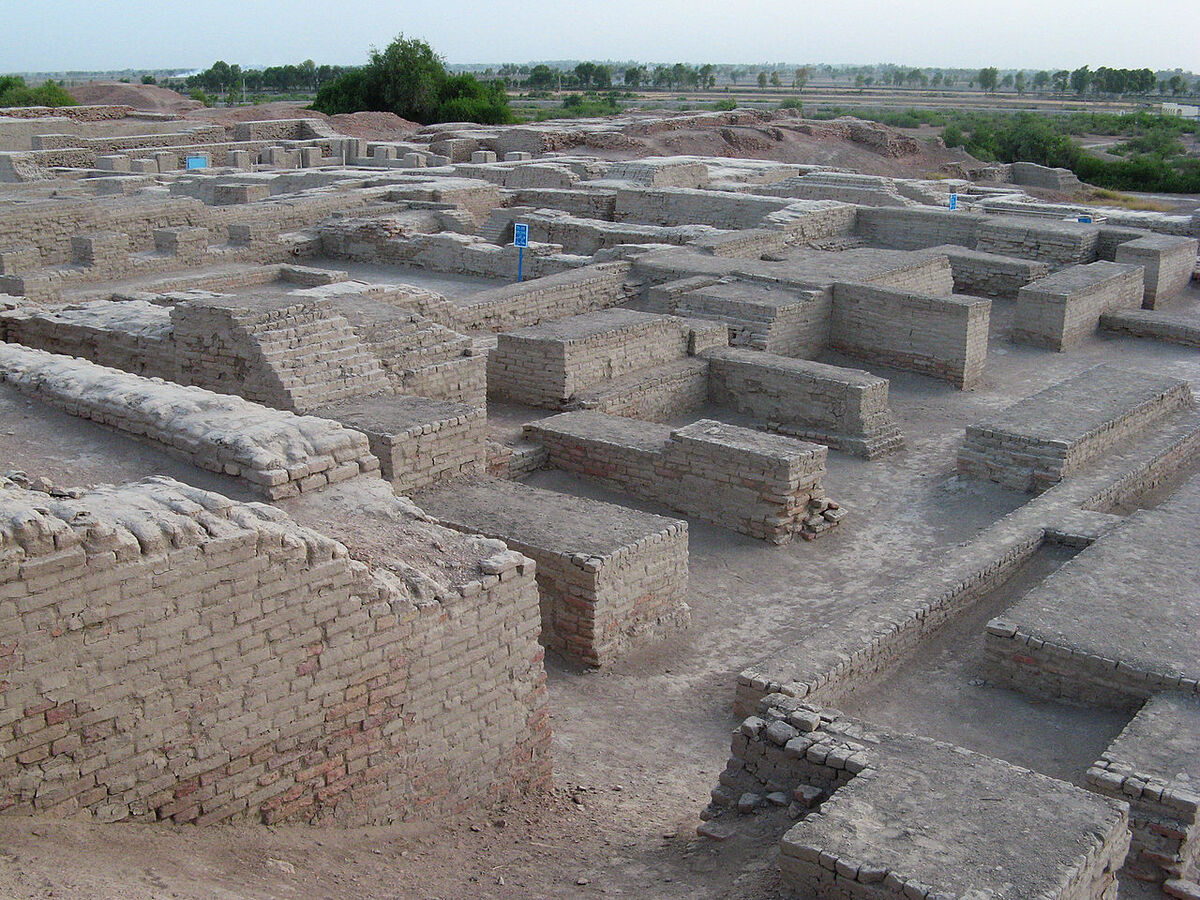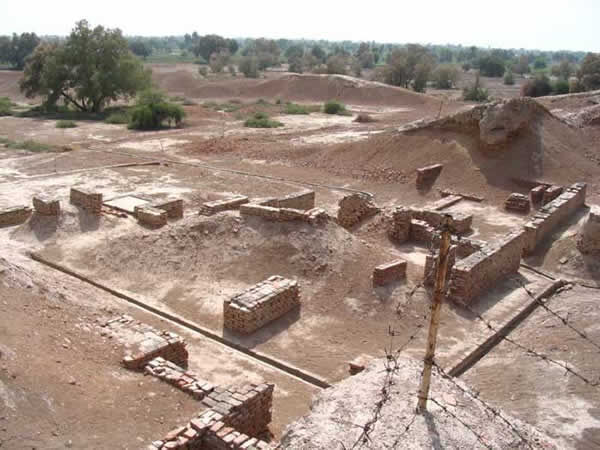The concepts covered in this fact sheet go beyond those seen in secondary school. It is intended as a supplement for those who are curious to learn more.
Around 3000 B.C, a great civilisation came to life in the Indus Valley. This civilisation has now disappeared, but the importance of this river is still relevant today. The Indus is in fact a long river that rises in the Himalayan mountains, flows through present-day Pakistan and empties into the Arabian Sea.

Territory of the Indus civilization
The Indus civilization (one of the first civilizations to exist, along with those of Mesopotamia and ancient Egypt) was able to develop over a vast territory thanks to the many branches of the river. The river irrigated the land, encouraging agricultural production. The first farmers grew mainly wheat, but also cotton, dates, sesame seeds and chickpeas. Breeders in this region domesticated many animals, including goats and sheep. But it was the buffalo that was most useful for transport and agricultural production.
The Indus civilisation spread over such a vast area (communities could number up to 30,000 inhabitants) that it was necessary to create roads and organise transport. The inhabitants also drew up plans for building neighbourhoods. The Indus civilisation is credited with inventing thoughtful urban planning (building cities according to a certain logic). While there were no temples or palaces, all the houses were the same size, spaced evenly apart, and the streets were the same width, lined with covered sewers.
The Indus civilization did not develop a real writing system. Instead, the inhabitants invented a system for managing and identifying transactions (to clearly identify business partners who were often far apart). This system is similar to the signatures that prove the authenticity of a document. Signatures’ have been found in the form of seals, i.e. imprints stuck on the opening of a personal document to guarantee that it has not been opened, notably at Mohenjo-Daro. Inscriptions (4 or 5 characters long) have also been found on ceramic pots. But these inscriptions or symbols remain undeciphered to this day.

Ruin of Mohenjo-Daro
Harappa is a village in what is now northern Pakistan. It dates back to around 2700 B.C. Harappa and Mohenjo-Daro are the two most important cities of the Indus civilisation. Archaeological excavations at Harappa began in 1921 and a number of artefacts were found. The city was surrounded by an imposing wall that protected it. Like the other cities built along the Indus, Harappa was a city whose urban development was well thought out: its streets were exactly the same width and intersected at right angles. There was also a sewage system. Several estimates put the number of people living in Harappa at 40,000.
